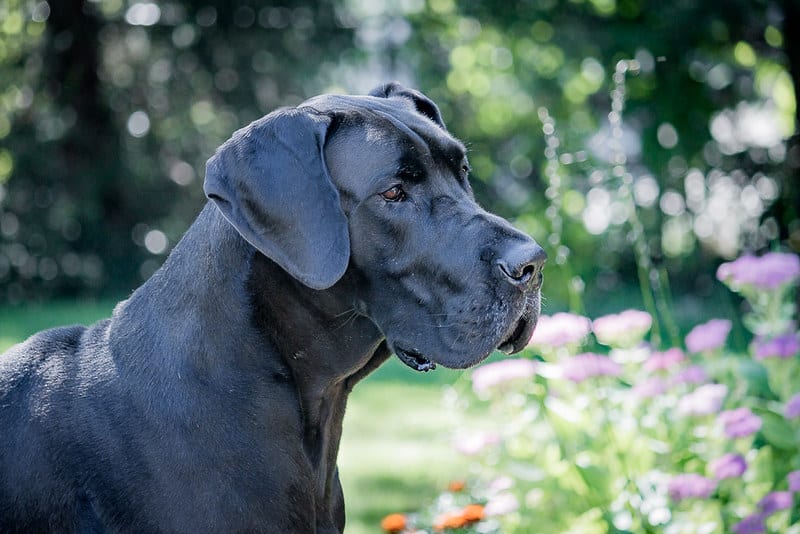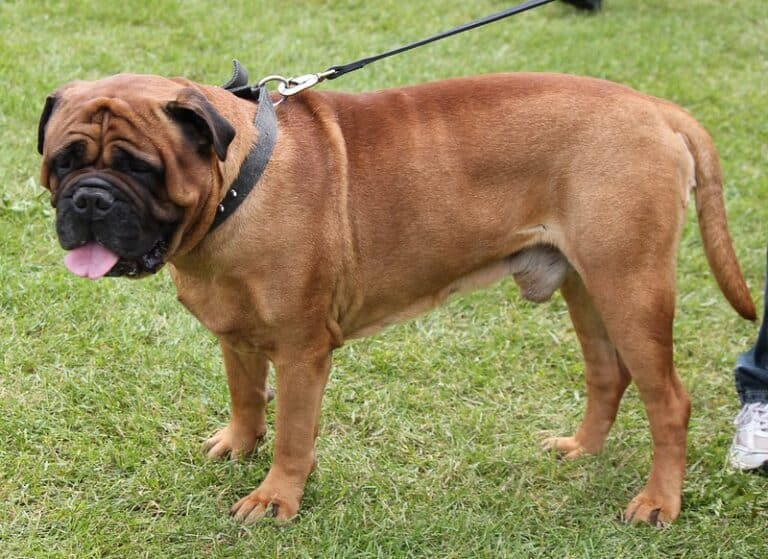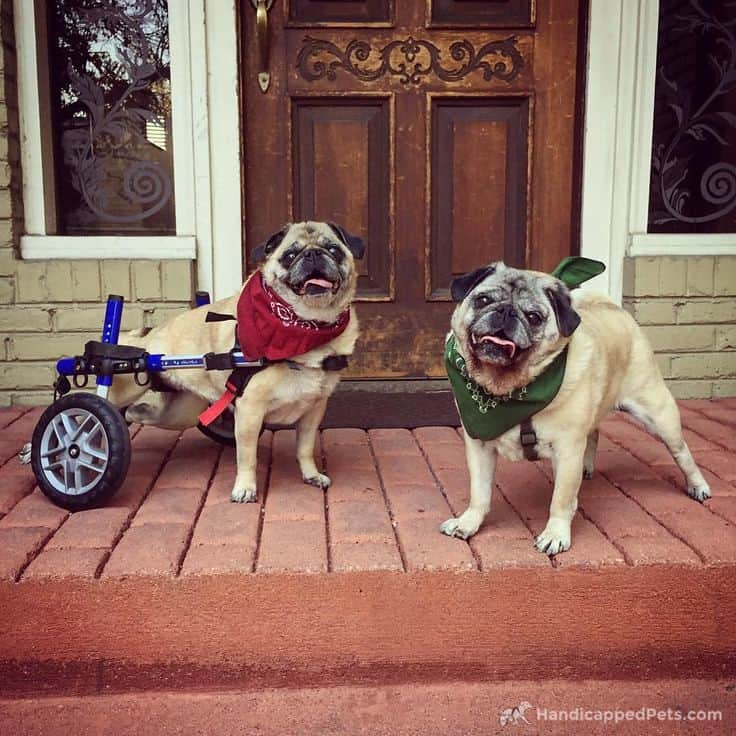Hip dysplasia is one of the bone and joints diseases that affect most dogs.
If you think your dog may be suffering from this disease, you will get to know more about the symptoms and appropriate treatments for your furry friend in this post.
WHAT IS HIP DYSPLASIA IN DOGS?
It is a disease related to the hip bones’ poor fit; it is when the head of the femur does not fit completely into a cavity called the acetabulum.
In some dogs, this socket does not develop naturally as they grow, their hips do not grow properly, and they go sideways when they move.
The femur’s head is displaced sideways, preventing it from moving naturally and causing limping and pain in the dog when walking due to wear on the joint.
Factors That Can Cause Hip Dysplasia In Dogs
Dysplasia in dogs is caused by several factors such as genetic, multifactorial, or hereditary malformation.
This disease can be so painful that it can incapacitate the dog’s hind limbs when it reaches an advanced stage. It usually appears from 5 or 6 months of age.
Although it is common for symptoms to be visible when the dog is an adult, a dog is considered free of dysplasia until it is over two years old and has not presented any incongruity on X-rays.
Fast growth
Poor feeding of your dog on an excessive or inappropriate diet could cause it to become overweight and suffer from this condition. The heavier the dog, The more stress there is on the joints.
Excessive physical exercise
Exercises that impact the joints can cause your dog even more damage if it is in its puppy stage. The exercise should be rectified according to its age and weight; otherwise, if the dog spends most of the time inactive, the pain will come again.
Breeds of dogs most likely to suffer from hip dysplasia
According to the Orthopedic Foundation for Animals, all breeds can suffer from dysplasia, but this disease commonly appears in large or giant breeds, where there’s a 20% chance of occurrence.
It doesn’t help if these breeds have not received an adequate dose of calcium and minerals required for normal growth.
Some of the breeds most prone to hip dysplasia are:
- BullDog
- Great Dane
- Saint Bernard
- Neapolitan Mastiff
- German Shepherd
- Rottweiler
- Retrievers (Labradors and Goldens)
- Siberian Husky
- Spanish Mastiff
- Belgian Shepherd Malinois
Signs and Symptoms
During the first weeks of the life of the puppy, it isn’t easy to detect dysplasia. Only as it grows you can notice symptoms like acute lameness that prevents the dog from playing normally and several of the following symptoms:
- Walking and jogging with a hip sway
- Difficulty getting up
- Hind leg stiffening
- Muscle atrophy
- Mood swings
- Palpation pain
- Remain seated longer than usual
- refuses to play certain games or climb stairs
- Frequent slips
How to Prevent Hip Dysplasia in Your Dog
The problems and pain produced by this pathology can be prevented and alleviated. Because it is a hereditary disease, it is good to learn about your dog’s parents, whether they have suffered from this disease or not.
It is also important to look after your dog’s diet when it is a puppy and control the amount of food given, especially between 3 and 8 months of age.
And visit your vet regularly for general check-ups and monitor its development and the condition of its joints.
Surgical treatment
Surgical reduction – it allows the treatment of the damaged tissues and provides implants that help the joints.
Femoral head osteotomy involves removing and replacing the femoral head and putting a prosthesis or “false” joint in place. Although the animal loses some mobility, it does not suffer from a hip dislocation again. To improve mobility as much as possible, physiotherapy is recommended.
Total hip replacement – the natural joint is replaced with a synthetic prosthesis, making it a completely painless hip with full function.
Non-surgical treatments for hip dysplasia
There are several types of home treatments for this disease to avoid surgery. Each depends on the degree of the problem and how it develops in the dog.
1-Massage:
Give your dog a relaxing massage along the whole spine by applying gentle pressure with circular movements. This will keep the joints warm and will lessen the pain for your dog.
It is important not to touch the spine but to massage the sides.
2-Physical therapy and exercise:
Controlled exercises are beneficial for your dog, starting with moderate exercises and increasing them step by step to strengthen their muscle mass.
3-Swimming:
Swimming is a highly recommended activity to improve joint strength without putting pressure on the hip.
4-Feeding:
The idea is to improve your pet’s diet with foods enriched with fatty acids, fiber, and minerals, and low in calories that will take care of its bones and joints, as well as prevent it from becoming overweight.
Omega-3, Collagen, and Glucosamine are very beneficial for dogs with joint disease. They prevent wear and tear of bone and cartilage and maintain the overall health of your furry friend.
They help your dog enjoy a normal active lifestyle. Designed to help dogs with hip dysplasia. Walking your dog will be easy and painless by supporting the hip. Also, help to reduce any inflammation.
Wheelchairs offer mobility to a dog that can no longer properly move its paws (back or front). These contribute to the animal’s recovery, reduce rubbing injuries, and stimulate activity and exercise, among other things
8-Dog Beds:
Make sure you have a good orthopedic bed to improve the resting area for your dog. It adapts to the posture of the dog and keeps it warm. This, in turn, will keep the joints warm and will hurt much less when the dog moves or walks.
Orthopedic dog beds are designed to provide special support for the muscles and joints, helping to distribute the dog’s weight over its surface.
There are several models of orthopedics beds that provide a great deal of comfort and help elderly or dysplastic dogs.
- Kopeks Orthopedic beds: These beds have 3 layers of 3 different types of foam that give greater comfort, have a non-slip base so that it does not move when your dog moves, also they are quite resistant. It is great for pets with arthritis, hip dysplasia, joint, muscle stiffness, or pampering your pooch that so much deserves the best sleep quality.
- Bedsure Memory Foam Orthopedic Dog Bed: Soft velour top gives your dog a cozy spot to lie on. It has two thick layers of memory foam that offer your pet joint support by gently cushioning pressure points.
- Cozy Hut Pet bed: 4″ high-density support orthopedic memory foam. The inside material is made of a medical-grade memory foam, which can retain its shape for continued support. It offers the right balance of support and comfort.
- Go Pet Club CC-44 Solid Memory Foam Orthopedic Dog Pet Bed: The Orthopedic memory foam will relieve your pet’s aches and pains in their joints; it is great for pets with arthritis, hip dysplasia, and joint and muscle stiffness.
Related Blog: Best Dog Beds for Hip Dysplasia
Hip dysplasia in dogs can be treated in several different ways, with treatments varying according to factors such as the severity of symptoms, breed, age, or weight of your dog.
With proper care and treatment, you can ease the swelling, pain, or symptoms your furry friend is experiencing. Also, a proper diet and good food supplements help protect the hip joint.
This problem is quite common, so we recommend that you take care of your dog’s growth and control its feeding during its development to help prevent or detect this disease in time.
And always give a lot of love to your furry friend. It makes a difference when you understand the pain they’re going thru. Keep an eye on its symptoms.
Regular visits to the vet are key to ensuring your pet’s well-being. With the necessary care, patience, and understanding, your dog will be able to overcome these types of illnesses.
Recent Posts
As a dog owner, you want to ensure that you take proper care of your furry companion. A common question that many pet owners have is, "Can I walk my dog 30 minutes after eating?" Understanding the...
Have you ever considered getting an elevated dog bed for your furry friend, but wondered if it's worth the investment? If so, you're not alone. As dog owners, we all want to provide the best care for...




